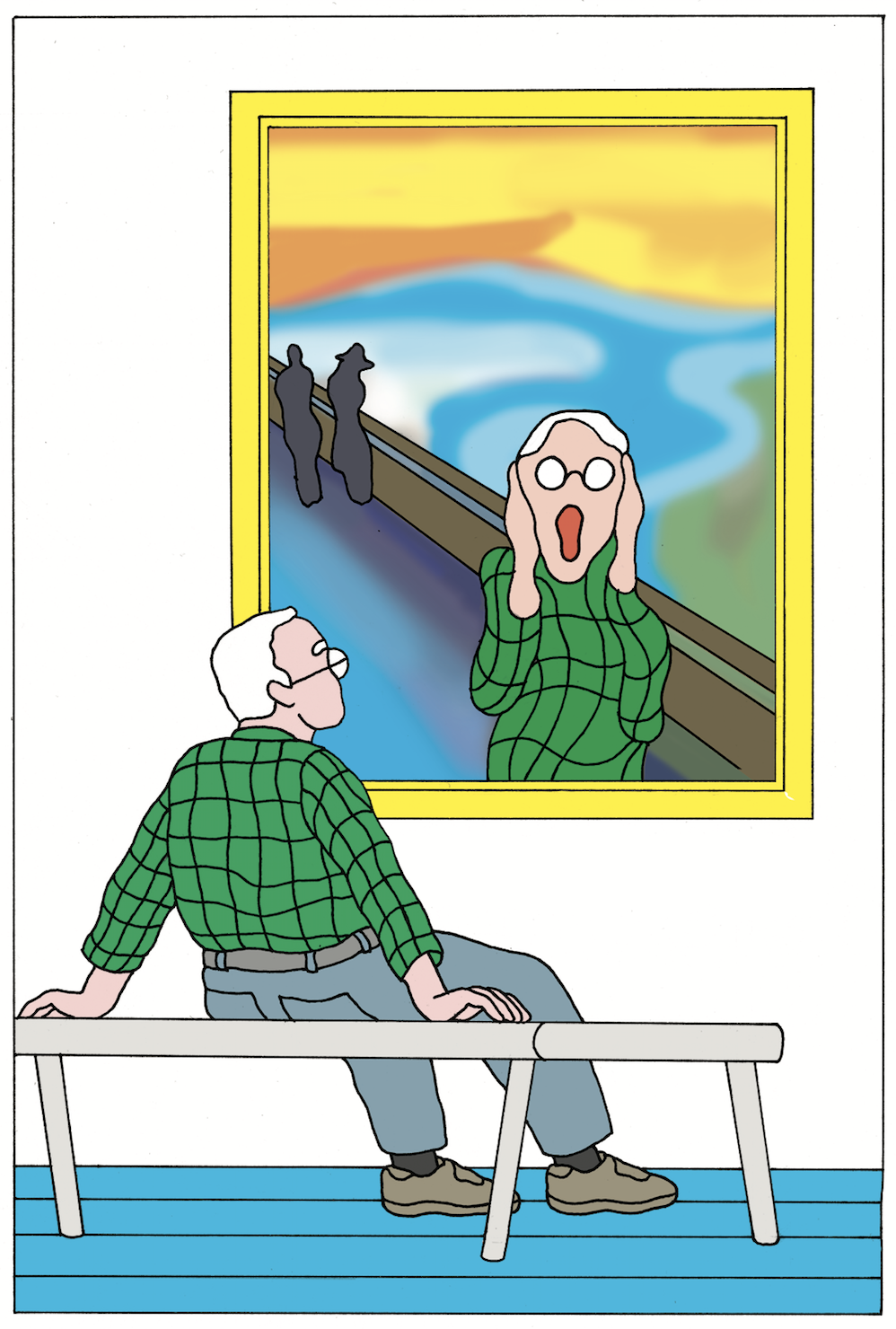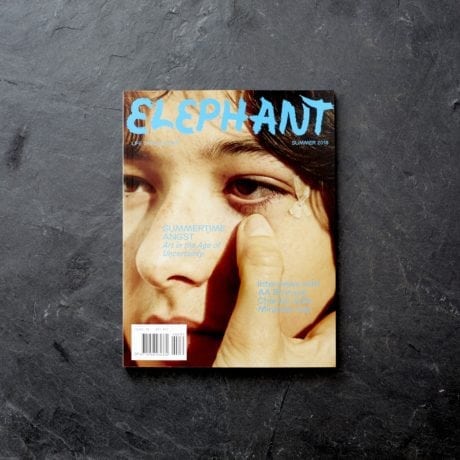
“I come from a working-class military family. We watch the news and read the paper and vote, so there’s always something to be upset about. I have a certain amount of angst in my back pocket.”
—Pink
A discussion about angst is the same as a discussion about life itself. Everyone has it unless they are dead or on a regime of tranquilizers. The question is: Why has the pharma industry developed a huge range of tranquilizers? The answer is: Because they know that you think your agita is undesirable.
When someone knocks on my door, I have an angst attack. I think: “Who is it? What do they want? Is it bad news? Leave me alone.” I have this reaction even when my neighbour knocks on my door, and she’s often just there to give me some cookies she’s baked. Could it be because each time a bill collector came to the front door when I was a child, my aunt, with whom I lived with my mother, would dispatch me? My instructions were to tell the collector that she wasn’t at home. They always became pissed off at me, when I had done nothing. My stepfather claimed that my aunt was responsible for my being incapable of handling money wisely.
What is the emotion in Edvard Munch’s The Scream? If you didn’t know the name of the painting, perhaps you might think the central subject has won $500 million in the lottery: running down the street with sheer joy and ecstatic surprise.
Robert Rosenblum, a Munch scholar, claims that a Peruvian mummy inspired the artist. The mummy’s hands held his face in a strikingly similar manner, and the body was shown at the Paris Exposition Universelle in 1889. Incidentally, this was the fair that featured the new Eiffel Tower and celebrated the hundredth anniversary of the storming of the Bastille.
“The popularity of gruesome horror films is a mystery, at least to me. People love to be frightened, especially children”
Other scholars have suggested that the mummy also captured the imagination of Paul Gauguin, who realized it in more than twenty paintings. Still others have proposed that the screaming figure and Munch himself have a mental disorder known as depersonalization, or a detachment from one’s self.
The painting has made many appearances in wider culture, including episodes of Doctor Who and a novel by Philip K Dick, and has even been made into an action figure. Obviously, this gruesome image has captured the imagination of the public. Of course, the popularity of equally gruesome horror films is likewise a mystery, at least to me. People love to be frightened, especially children.
Frank Baum’s Oz book series of fourteen novels calls on feelings of both love and hate, one right after the other, no resting between them. I’ll provide one example from The Tin Woodman of Oz, one of the volumes.
In the book, a woodman known as Nick Chopper is passionately in love with a young woman who has been captured by the Wicked Witch of the East. Every time the woodman finds her in the witch’s clutches and attempts to steal her away, the witch throws a bolt of lightning to chop off one of his body parts. The woodman takes the dismembered parts to a handyman in the forest who replaces them with tin parts until his entire body has become metal. This is when Dorothy meets him.
Being a feisty, can-do American, Dorothy Gale tells him that they will find his missing love, no matter what. They find that the young woman lives with a man in a cottage. The young woman’s companion has been created from all the body parts that the witch dismembered from the woodsman. The handyman saved them. And, sadly, the young woman refuses to leave. Thus, no happy ending.
“A study by psychologists at the University of California found that teenagers who worry the least are sick eight times more than those who whose angst is much greater”
Children loved Frank Baum’s tales of angst. The writer of Doctor Who, Steven Moffat, said that he deliberately wanted to scare children and that the stories are “scary in the way a rollercoaster is scary… not scary like being trapped outside your house at night. It is fun scary. Kids like being scared of Doctor Who. It doesn’t horrify them. It doesn’t petrify them. It is just an enjoyable thrill. There is nothing wrong with a bit of adrenalin.”
Angst is a good thing. Angst is in the genes of Germans, who worry much of the time. Faust said: “Germans make everything difficult, both for themselves and everyone else.” Even today, the German economy strongly binds the good and bad.
Scientists all over the place are measuring feelings. A study by psychologists at the University of California found that teenagers who worry the least are sick eight times more than those who whose angst is much greater. This discovery explains my almost non-existent illnesses. However, I do game the odds with vaccines.
If you don’t experience angst, feelings are absent. It’s why taking tranquilizers is an undesirable practice. They kill your feelings, especially bad ones. Angst is part of your humanbeingness. It is certainly a large part of mine.
This feature originally appeared in issue 35
BUY ISSUE 35






